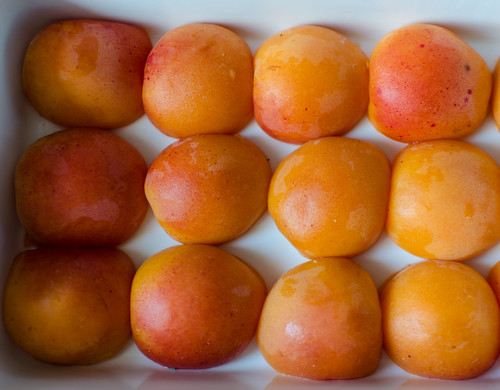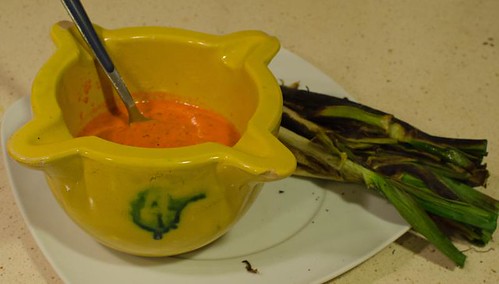

An Elizabeth David book in the reserve collection? Yes, really! This was a Christmas present a few years ago, and I confess I’d forgotten I had it, so I pounced on it with a cry of delight. It was actually published posthumously; in her preface her editor Jill Norman says they’d discussed the concept off and on for years, but it never came to anything, so after Elizabeth’s death she was surprised to find a box with a pile of notes and clippings for the book, and even an introduction. So she pulled the material together and published it.
Many of the recipes are from ED’s other books, but it’s nice to have all these seasonal recipes in one place. Not that ED was much of a fan of the traditional British Christmas. She got bombarded with calls from friends and family asking how long to to cook the turkey or the pudding, or saying they’d lost the recipe for Cumberland sauce so could she give it them again — to the point where she printed a pamphlet of the most popular recipes and handed it out to them. Classic ED:
If I had my way — and I shan’t — my Christmas Day eating and drinking would consist of an omelette and cold ham and a nice bottle of wine at lunchtime, and a smoked salmon sandwich with a glass of champagne on a tray in bed in the evening.
What frenetic cook preparing for a family Christmas can’t empathise with that in the days leading up to “the Great Too Long”? It certainly makes a refreshing change from other Christmas cookbooks.
That being said, although there are token recipes for traditional Christmas food like mincemeat and Christmas pudding, much of the focus of this book is on simple but impressive small dishes that can be prepared ahead, pâtés and terrines that can be kept in the fridge for nibbling, and better-than-average ways of using leftovers (including one of my all-time favourite leftover dishes, émincé de volaille au fromage). And like all of ED’s books it is designed to be read for pleasure, not just to cook from. I happily spent an afternoon lounging on the sofa by the fire reading it while my untended bread dough bubbled over the edge of the pan.
Happily, the organic veg box provided all I needed for a simple soup of tomato, leek and celery. She writes “This is one of the most subtly flavoured of all these vegetable soups … a good soup with which to start the Christmas dinner.” It was indeed. Celery is something I don’t like as a vegetable, but as a herb it adds a nice peppery edge to soups and stews. My tail-end-of-season tomatoes weren’t the best, but they did the job — if I make it again at Christmas I’ll use tinned ones in preference to tasteless fresh ones (one day I’m going to start a campaign to ban the sale of fresh tomatoes between October and May).
Unfortunately, the box also contained parsnips, for the third week in a row. So I decided to give her cream of parsnips and ginger with eggs a go. I got as far as cooking and mouli-ing the parsnips and adding the ginger, and the result tasted so unutterably foul that I almost threw it straight in the bin. We just had soup and cheese and biscuits that evening. I don’t think I can blame Elizabeth David for this though — I just don’t like parsnips, and somehow mashing them makes them taste more parsnippy than just roasting would.
This book will definitely stay in my collection. And it’s a good Christmas gift for foodies as well, a reminder of how truly good food writing is impervious to fashion. So much so that the modish soft-focus photos that the publishers obviously felt had to be in any modern cookbook are entirely superfluous. Elizabeth David’s words are enough
Read More


